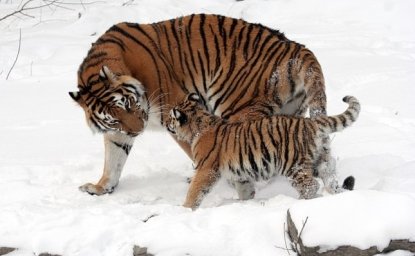
A blog of the Science and Technology Innovation Program

“For some reason women and girls think that they’re not good at math and science or they don’t have an aptitude for it. I find it to be strange. There is no reason physically or emotionally for that,” said Smita Shah, Wilson Center Cabinet Member and Founder and CEO of SPAAN Tech, Inc. -- an engineering company based in Chicago. She spoke at a recent event hosted by the Wilson Center's Science and Technology Innovation Program (STIP), moderated by Dr. Elizabeth Newbury of the Wilson Center on July 16, 2019. The discussion revolved around issues of increasing gender diversity in science, technology, engineering and mathematics (STEM).
In STEM fields, gender parity has yet to become a reality. According to the NSF, women are at historic lows in some fields, like computer science, where women make up 19% of bachelor degree earners. Although women make up 51.5% of the population and 47% of the workforce, in terms of science and technology, women are only 41% of doctorate earners (1). Comparatively, women make up approximately 28.8% of research and development (R&D) positions in the world (2). In the broader context of STEM jobs in the US, research produced by the Department of Commerce suggests that women hold only approximately 24 percent of STEM jobs (3).
The gender gap ultimately impacts businesses, limiting the talent pool. As a business owner and entrepreneur, Shah argued, “For us to be successful in this global multi-cultural environment we have to engage 50% of our population and make sure that girls know being in math and science is something they can do, it’s normal and it’s great.”
Early Exposure to STEM
Panelists spoke to a crowd at 1871 in Chicago
Some avenues to address the lack of women in STEM fields include designing specific programming for girls that fosters learning and a love of STEM at a very young age. From a very early age, children are developing a sense of what is typical for their gender (4), and there is growing evidence that this includes whether girls see a place for themselves in STEM fields.
“As early as third grade girls are deciding whether they’re interested in STEM or not." said Candice Schaefer, Sr. Director of Program and Adult Development for the Girls Scouts of Greater Chicago and Northwest Indiana (GSGCNWI). Girl Scouts of the USA (GSUSA) is the nationwide nonprofit that specializes in leadership and development programming for girls ages 5 -18. GSUSA recently rolled out a series of programming initiatives that focuses on putting age appropriate STEM education at the forefront for young girls to help bridge the divide.
Per Schaefer, her council is working on sparking an interest in STEM at a very young age. “We have progressive programming where they start as Daisies (which is our kindergarteners) ...fun programs that are just introducing them to STEM — and then nurturing that as they progress through Girl Scouts — to really develop a skill that they can take into the real world."
Even though this concerted effort to increase learning opportunities is still relatively new, Schaefer talked about the impact this programming had on encouraging girls to engage with STEM — even before technology became a part of their lives.
“One of the activities in the cybersecurity badge is that they design a castle and they have to have three lines of defense for their castle, so they brainstorm and use the design process… and it's a great way to learn cybersecurity,” Schaefer, describing some of the badge activities for the younger Girl Scouts. These activities demonstrate key learning components of STEM even without computers, “making it fun to access and learn something you didn’t even know was STEM.”
This type of education not only builds skills needed for STEM, but also fits into a larger conversation about the need to show the range of careers available. “I think that’s the biggest challenge, even I — who grew up in an engineering environment and was familiar with math and science — wasn’t aware of all the different opportunities that are available in math and science. I have a friend from Northwestern who went off in mechanical engineering to design roller coasters for Disney," Shah remarked.
Unblackboxing the range of careers and opportunities available in STEM practices — and making STEM writ large accessible from a very young age — is one step towards increasing representation and helping girls see themselves as having a future in STEM.
The Role of Mentorship
[[{"fid":"147286","view_mode":"default","fields":{"field_file_image_alt_text[und][0][value]":"Panelists left to right: Elizabeth Newbury, Smita Shah, and Candice Schaefer","field_file_image_title_text[und][0][value]":"","field_file_source[und][0][value]":"Personal photo","field_file_caption[und][0][value]":"Panelists left to right: Elizabeth Newbury, Smita Shah, and Candice Schaefer"},"type":"media","attributes":{"alt":"Panelists left to right: Elizabeth Newbury, Smita Shah, and Candice Schaefer","class":"media-element file-default"}}]]
Another key element to increasing the pipeline of women into STEM fields also begins at a young age, particularly through the role of mentorship. For some, this starts in the home. Shah's experience hinged significantly on her own experience with having a mentor at home. Her father often encouraged her to think differently: “When I was growing up and we would be going over a bridge and my dad would say, ‘how is this bridge constructed?’" Shah added later, "I was fortunate because I had a dad who was an engineer and I was good at math and science… so when I was a junior in high school I asked my dad ‘what do you do if you’re good at math and science?’ and he said ‘you become an engineer.’”
Parents are not the only mentors in girls lives, however. Teachers — and in the case of the Girl Scouts, troop leaders — also are vital to helping lay the groundwork for future engagement in STEM. One barrier to this support structure, however, is adults feeling equipped to teach STEM skills. To address this need, GSGCNWI offers STEM enrichment training for troop leaders with local experts from STEM fields. As Schaefer noted, this builds confidence in the troop leaders who can then share this confidence with their girls. "You can be curious with your girls. You don't have to know it in order to teach it… It's okay to learn with your girls."
Connecting with role models from the community, that girls can see themselves in, is critical. The transparent representation of women in STEM is one of the consistent points of concern around diversity in STEM fields. "Having female mentors is so important. If the girls can't see women in technology then it may not inspire them [to enter STEM fields]," Schaefer argued. Recognizing that it is not just up to girls to navigate their place into STEM fields, but it is up to the broader ecosystem of mentorship coming from adults, is key to understanding how we can navigate existing barriers for girls into STEM.
STEM As an Interconnected Discipline
The panel discussed the growing desire to showcase STEM as interconnected disciplines as one pedagogical challenge. Transdisciplinary approaches may provide not only creative solutions to today's problems, but also provide an avenue forward on bringing more women and girls into STEM fields. GSGCNWI is tackling this in two ways: STEAM, or the integration of arts (hence the 'A') as part of STEM; and supporting the girls in tackling local issues.
Not all Girl Scout councils officially adopt STEAM, but with the growing national attention being paid to STEAM-based approaches in education, it was a natural fit for the Chicago-based council. By incorporating art skills and pedagogical approaches into their practice, GSGCNWI is seeing an opportunity to provide more pathways to learning. “Art used to be involved in STEM and in science and it has been taken out. To add it back in allows girls more opportunity to learn, to be curious, and to try creative solutions,” Schaefer argued.
The need to revisit arts as being part of STEM was a point of agreement from Shah, who pointed to examples like Leonardo di Vinci and other historical figures, "Art and science and technology has always been intertwined and if you really think about it the great ancient cultures have always included art in science, it was going hand in hand. Creativity is naturally a part of science and engineering and math."
But another crucial concern from the discussion was showing how STEM could be applied to day-to-day issues of girls. Grounding their programs in local action, Schaefer discussed how girls are driven to learn and use it more. By allowing girls to apply the scientific method or design processes that are important to them — such as building community gardens or figuring out why all the trees are dying in their local park — Schaefer was seeing the groundwork laid for girls to not only have a long-term interest in STEM, but see themselves as active participants in the STEM fields from a young age.
Ultimately, this is part of the point of being in a STEM field for Shah, particularly a field like engineering. “At the end of the day, we are making a difference for people. We are thinking about how can a mom go and buy milk for her child without getting on a bus and going five miles to do so in the middle of the night in any community," Shah said, "Those are the things we are thinking about and, you know what? As a woman I know I think about those things every day. ...It’s about making a difference and improving the lives of people, and girls and women think about that. They think about how to improve their lives so they can do more.”
References:
-
National Center for Science and Engineering Statistics (2019). "Women, Minorities, and Persons with Disabilities in Science and Engineering." Accessed from: https://ncses.nsf.gov/pubs/nsf19304/digest/introduction
-
The UNESCO Institute for Statistics. (2018). Women in Science. Fact Sheet No. 51., June 2018. Accessed from: http://uis.unesco.org/sites/default/files/documents/fs51-women-in-science-2018-en.pdf
-
Noonan, R. (2017). STEM Jobs: 2017 Update. ESA Issue Brief, 02(17). US Department of Commerce.
-
Martin, C. L., & Ruble, D. (2004). Children's search for gender cues: Cognitive perspectives on gender development. Current directions in psychological science, 13(2), 67-70.
Authors


Student at Georgetown University majoring in Foreign Service



